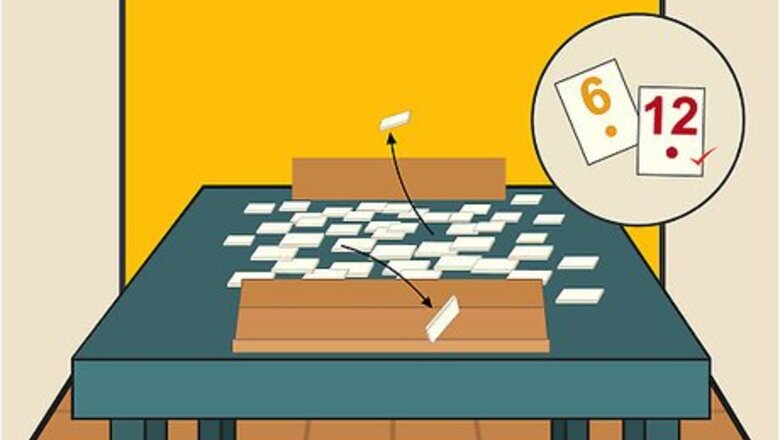
views
Setting up the Game
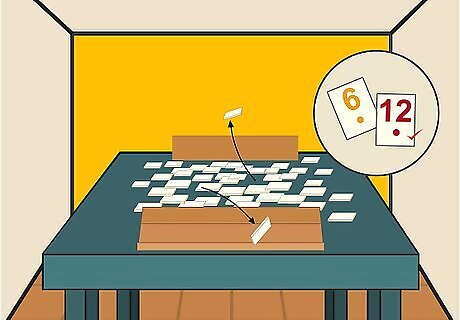
Choose a tile from the bag to see who goes first. Have every player choose tile. The person with the highest tile goes first. If there's a tie for first place, those players can draw again.
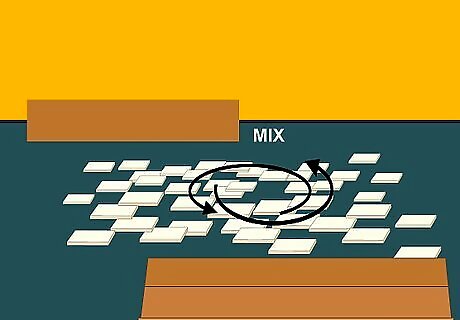
Flip and mix the tiles. Turn the tiles over so they're all face-down, and then use your hands to stir them up. This process randomizes the tiles, like shuffling cards. You can also mix them in the tile bag if your game has one.
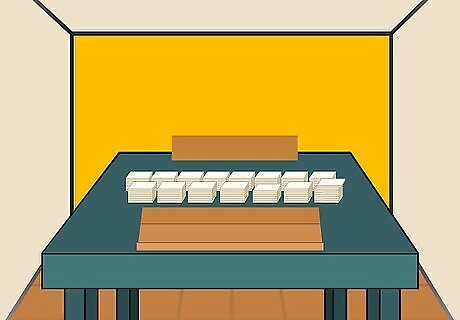
Stack up the tiles in groups. Make the stacks as small or as tall as you want, though keep in mind that stacks that are too tall will fall over. Place the stacks in the middle of the table where everyone can reach them. If your game has a tile bag, you can leave them in that instead of stacking them on the table. You just need a common pool of tiles to draw from.
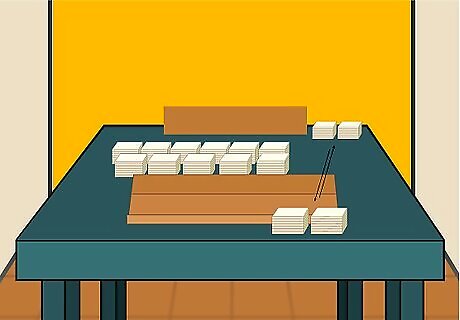
Give each player a tile rack and 14 tiles. The tile rack is where the player keeps their tiles. Begin with 14 tiles apiece, randomly selected from the tile bag or the stacks on the table.
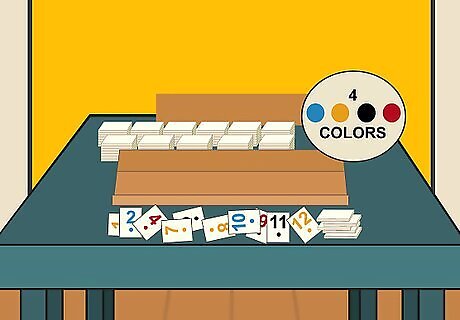
Note that there are 4 different colors of each tile. The colors in Rummikub are orange, red, blue, and black. They act like card suits. You need matching colors to make certain sets, such as a run of consecutive numbers, and different colors to make other sets, such as a group of the same number.
Starting the Game
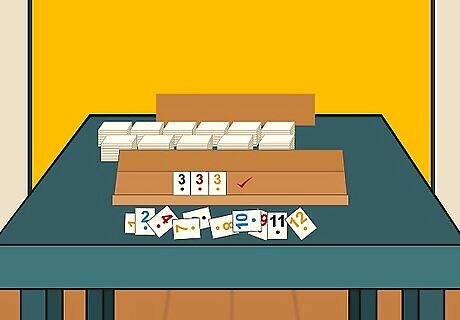
Try to find 3 tiles of the same number in different colors on your rack. Create a set using tiles with the same numbers on them, which is called a "group." For instance, you might have 3 8s. The tiles must all be different colors, such as blue, black, and red. You can't play a group with a blue 8, a blue 8, and a black 8, for instance.
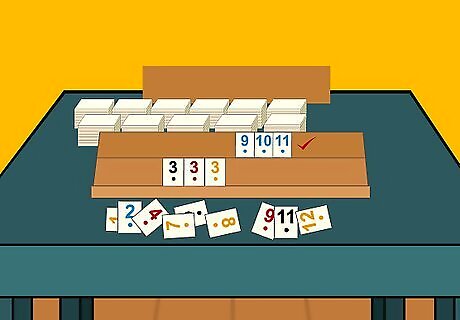
Find runs of 3 in the same color on your rack. A run is 3 consecutive numbers in a row, such as "7, 8, 9." When you make a run, all the tiles must be the same color, such as blue or black. You cannot continue a run from 13 to 1. For instance, you can't play "13, 1, 2."
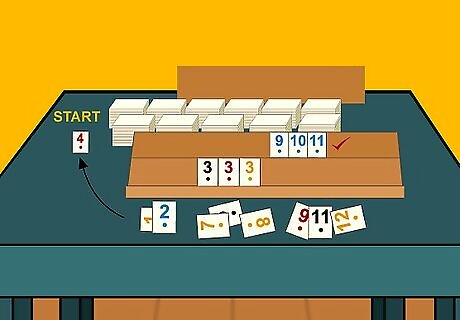
Begin with the first player and move in a clockwise direction. On your turn, you can draw a tile or play tiles. To play tiles, lay down a run or a group from your hand or play off other tiles on the table. However, you can only play tiles after you've made your initial meld. To play, just lay the tiles down on the table in front of you. Once they're there, anyone can move them around and play off of them.
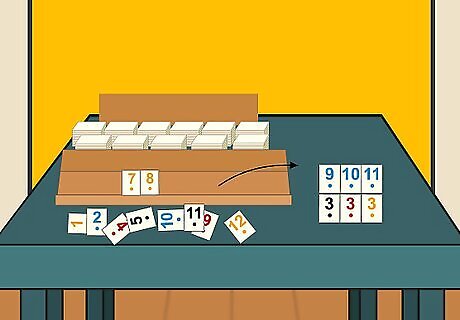
Create your initial meld. The initial meld is the first time you lay down tiles on the board. You must have at least 30 points across one or multiple sets to make your initial meld. You can make groups, runs, or both for your initial meld. You can't play off other sets on the board for your initial meld. You receive points based on the number on the tile. The color doesn't affect the number, so a blue 11 is worth the same amount of points as an orange 11. A joker is worth the number of points on the tile it's replacing.
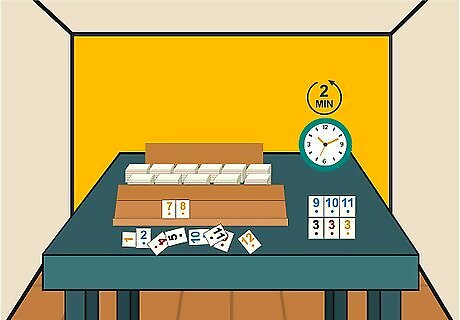
Play your turn within 2 minutes. The game has a time limit for each turn, as people can get caught up in manipulating the board. If you don't complete your turn in this time, you must return the tiles to their original positions, and take a tile from the pool for your turn.
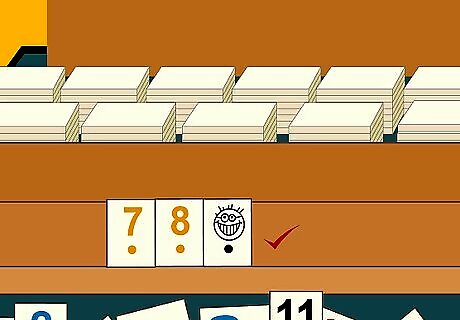
Use the joker to replace any tile in the game. There are 2 jokers in the deck, and you can play it in place of any other tile. For instance, it can be a red 6 or a blue 13. You get to decide. Be sure to use your joker because if you get caught with it in your hand at the end of the game, it counts for 30 points against you.
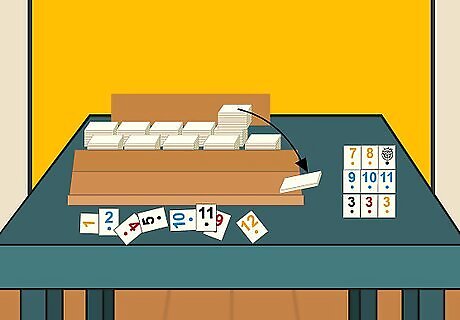
Take a tile at the start of your turn if you can't play. You can't play if you are not ready to make your initial meld or if you can't join a hand on the table after your initial meld. In that case, pick up a new tile from the pool in place of your turn.
Playing off Tiles on the Table
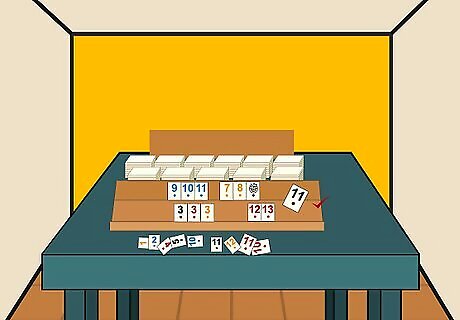
Use at least one tile from your deck to manipulate the table. When you're changing sets on the board, you must take at least one tile from your hand to make the manipulation.
Add 1 or more tiles to a current set. The easiest way to play off a set on the table is to simply build off of it. You can add tiles to runs or groups, as long as you follow the basic rules of these sets. [Image:Play Rummikub Step 14.jpg|center]] For instance, if there's a run of "3, 4, 5" in blue, you can add a blue 2, a blue 1 and 2, a blue 6, a blue 6 and 7, a blue 2 and 6, etc. to continue the set. If there's a group of a red 6, blue 6, and black 6, you can add an orange 6. However, you couldn't add a blue, black, or red 6 unless you manipulate the set by taking a tile to build another set.
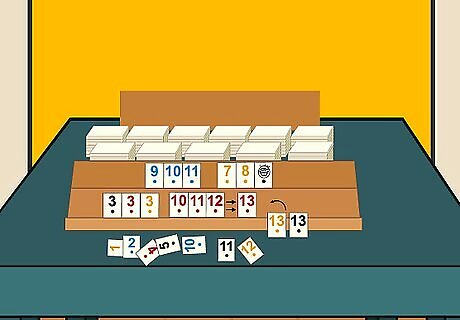
Take a tile from a set of 4 to build a new set. If you see a tile on the table that you could use to build another set, you can take that tile, as long as you don't leave the old set incomplete. Then, play it with the tiles you have on your rack. For example, if there's a set on the table that's a run of "5, 6, 7, 8" in red, and you need the red 8 to complete a set of 3 8s, you can take it. However, you couldn't take the 6 or 7, because that would leave the set incomplete.
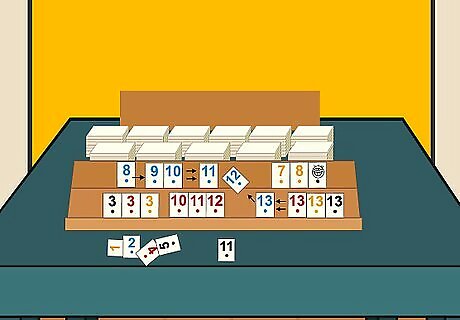
Add to and split a set to play tiles from your hand. Another way you can manipulate sets is to make the set larger so that you can split it. Then, you can take a tile from the set to make another set. For example, if there's a run of "6, 7, 8" in blue, you can add a blue 5 to the run. Then, you can take the blue 8 to add to a red 8 and a black 8 to make another set.
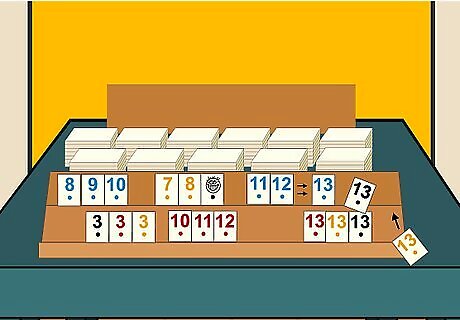
Split a run to play a duplicate tile. If you need to use up a tile that's already on the board in the middle of a run, split the run in half as long as it makes 2 complete sets of 3. For example, if the run on the board is "8, 9, 10, 11, 12" in blue, and you have a blue 10, you can make the runs "8, 9, 10" and "10, 11, 12" instead.
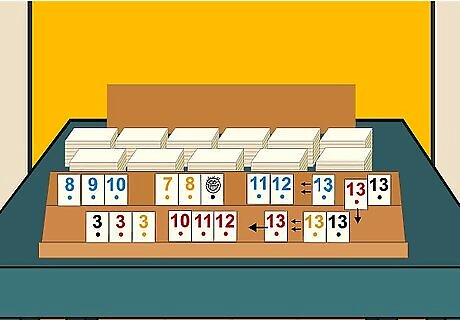
Split up more than one set to make new sets. You can manipulate the sets on the board any way you like, as long as you end up with complete sets at the end of your turn. For example, say the board has "1, 2, 3, 4" in blue, "2, 3, 4" in red, and "2, 3, 4, 5" in orange. You can make a group of 2s, a group of 3s, a group of 4s, a run of "1, 2, 3" in blue (with tiles from your hand) and a group of 5s (with more tiles from your hand).
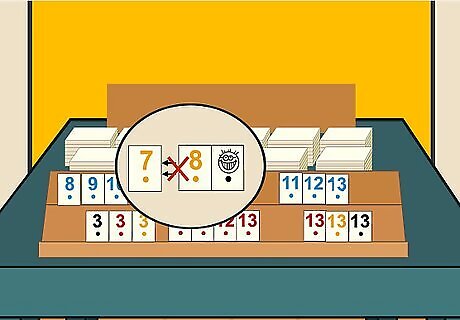
Don't take tiles from a set with a joker. While you can add tiles to a joker set, you can't remove them while the joker is still in the set. However, you can replace the joker with the appropriate tile, and then use the joker in another set. Rules from different versions vary on how you can reuse the joker. In some games, you may be able to pick up the joker only if you can use 2 tiles from you hand to form a new set with the joker. In other versions, you can split or manipulate a set with a joker. Check your game rules, or decide on a rule for your group.
Ending and Scoring the Game
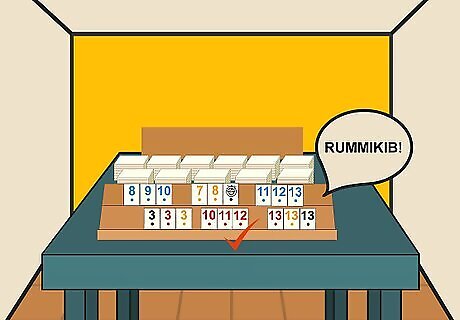
Use all your tiles and say "Rummikub!" The game ends when any one person runs out of tiles. It's good to be the first one out, as you'll get a better score than other players.
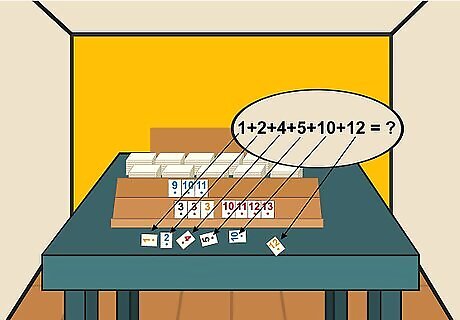
Count up each players' remaining tiles for their score. Any tiles left on a players' rack contribute negatively to their score. Keep track of these numbers if you're playing multiple rounds of Rummikub. For instance, if a player has the tiles 3, 5, 9, and 13 left, their negative score will be 30. Remember, a joker counts for 30 negative points.
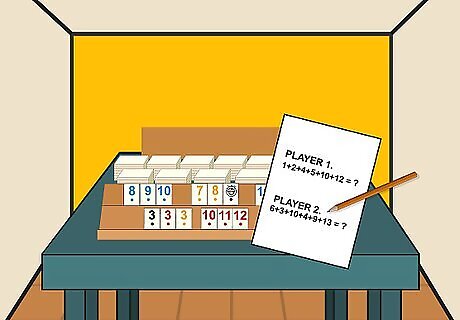
Add up all the other players' scores to get the winning player's score. Combine the negative scores of all the players. Take the negative away to create the winning player's positive score. For example, if the other players got -30, -14, and -22, add those scores up to get -66. The winning player gets a positive score of 66.
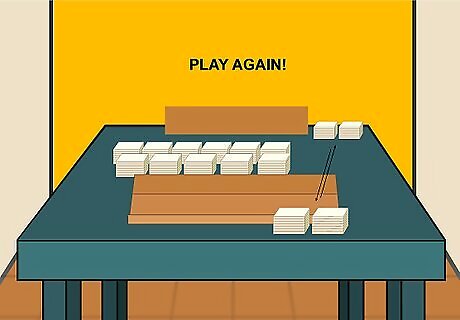
Play the game again, keeping track of each round as you do. Typically, you'll play more than one round of Rummikub. How many rounds you play is up to you, but you can keep track of scores across rounds to declare an ultimate winner for the game. The player with the most points wins the game.

















Comments
0 comment